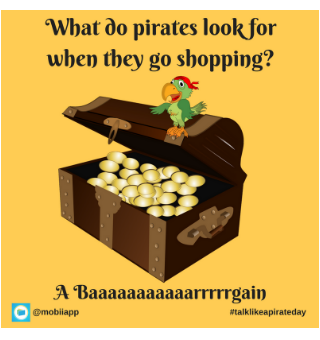For ecommerce companies, minor or “fluff” holidays are not just fluff—they are powerful stuff. Here’s how you can use fluff holidays to rake in sales on your website or mobile app.
Ever heard of Singles’ Day? Celebrated in China on November 11th (11/11) celebrates people who are proud to be single—as represented by the repeating number 1. But what really makes the holiday special is hot deals on ecommerce products in China. Believe it or not, 11/11 has become comparable to Black Friday there, thanks to sites like Alibaba. In 2017, over $25 billion was generated in revenue.
But there is a more important takeaway here. If you are an ecommerce vendor or “etailer”, why not adopt a similar technique to excite shoppers and boost revenue? Here’s how ecommerce sites can leverage ‘fluff’ holidays to earn more money.
Your fluff holidays strategy
When you stop to think, it’s remarkable how many such holidays there are, and how many are associated with great deals. For instance, President’s Day is a popular time for retail outlets to promote clearance sales. Meanwhile, Veteran’s Day is a common time to see deep discounts on new or used automobiles. The key to leveraging such holidays is to plan. For instance, if you sell baked goods online, try adding some green food dye and promoting your treats on St. Patrick’s Day for five-percent off.
 Then again, you shouldn’t just focus on the big holidays. The internet has made lesser holidays rather important to certain communities. “Talk Like a Pirate Day” is a perfect example. This holiday is super popular on social media and takes place every September 19th. Ecommerce vendors would do well to join the conversation and promote limited-time coupon codes like “ARGH!!” or “U R MY MATEY.”
Then again, you shouldn’t just focus on the big holidays. The internet has made lesser holidays rather important to certain communities. “Talk Like a Pirate Day” is a perfect example. This holiday is super popular on social media and takes place every September 19th. Ecommerce vendors would do well to join the conversation and promote limited-time coupon codes like “ARGH!!” or “U R MY MATEY.”
If you are looking for enterprise ecommerce solutions to boost your profits, you might want to promote kooky-holiday sales via email marketing too. This can be fun if your social media audience, or your email subscribers would like to play along. What’s more, you can always make up your own holidays. Celebrate the launch date of your ecommerce website or your mobile app each year: “It’s our birthday and you get the gift! Enjoy 25-percent off select goods!”
Do you have a product that just flies off the shelves? You can leverage that fact by reintroducing stock only once a year: “Love our handcrafted picnic wear? Get it before it runs out! It’s your last chance before 2019!” If you’re skeptical about the efficacy of this strategy, just look at McDonald’s annual McRib launch. They have created a cult following around a sandwich.
But don’t just stop at sales and promotions. You can also incorporate changes in your website design and in your app to instill an alternative holiday flair. For example, some e-store owners add reindeer and snowmen to their homepage at Christmas. You can do the same. Try adding clovers for Saint Patty’s, colored leaves for the first day of autumn and streamers for your e-store’s birthday.
Don’t be afraid to be silly. Your customers will likely recognize these fluff holidays are goofy and dumb. But that doesn’t mean it can’t be fun just the same. If you are having fun with it, so will they. And, they get bargains in the process.
What are you celebrating?
Such experimentation is good for an ecommerce brand. It energizes customers and increases revenue. Sure, the fluff holidays method might not work for your e-store the same way it does for Singles’ Day and Alibaba. But you will never know unless you give it a try.
Taking risks is the key to success in any industry, but it is especially true in ecommerce. As you know, the market is already saturated with online stores. So, why not stand out from the crowd by being bold, silly and fun?
Whatever you decide to celebrate, we wish you Happy “Holidays”.





